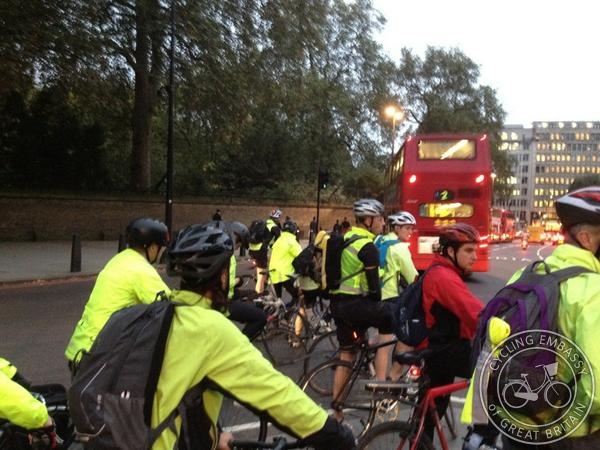Hi Viz
Short for 'high visibility'. Used to describe clothing (or other aids) that aim to increase conspicuity of people cycling, or walking.
Typically 'hi viz' takes the form of a bright yellow jacket, with reflective strips.

While this type of clothing can increase conspicuity, there is little or no evidence that it actually increases the safety of people cycling. A 2012 case control study found that
A slightly greater proportion of cases than controls reported using conspicuity aids. There was therefore a raised odds ratio of collision crash involvement for those using conspicuity aids even after adjustment for a large number of important confounders. The study results do not demonstrate a protective effect as expected given previous work testing the effects of such aids on drivers’ awareness of cyclists and pedestrians. This study demonstrates the importance of understanding why many cyclists remain at risk of collision crash resulting in injury despite the use of conspicuity aids.
A 2006 Cochrane review found that, while visibility aids may improve driver detection during the day,
the effect of visibility aids on pedestrian and cyclist safety remains unknown… Whether visibility aids will make a worthwhile difference needs careful economic evaluation alongside research efforts to quantify their effect on pedestrian and cyclist safety.
And a 2015 literature review is more conclusive.
Wearing visible clothing or a helmet, or having more cycling experience did not reduce the risk of being involved in an accident. Better cyclist-driver awareness and more interaction between car driver and cyclists, and well maintained bicycle-specific infrastructure should improve bicycle safety.
This evidence suggests that efforts to improve cycling safety should focus on the design environment, and user behaviour, rather than on conspicuity aids.
